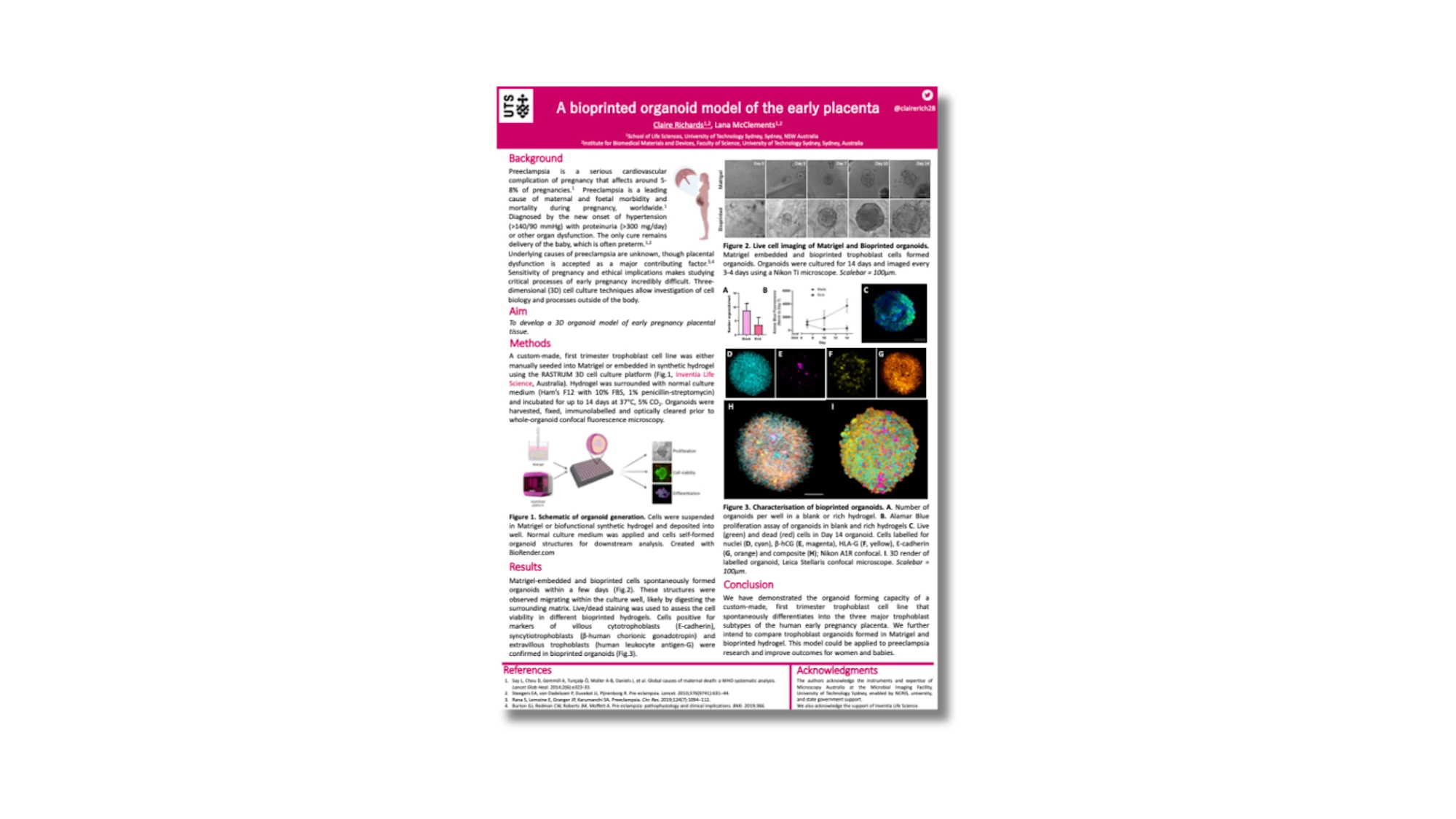
A bioprinted organoid model of the early placenta
Presented at Organoids Are Us Symposium 2023 by:
Claire Richards¹ , Lana McClements¹ ²
¹ School of Life Sciences, Faculty of Science, University of Technology Sydney, Sydney, Australia
² Institute for Biomedical Materials and Devices, Faculty of Science, University of Technology Sydney, Sydney, Australia
Abstract
Introduction
Preeclampsia is a cardiovascular disorder of pregnancy without a cure, in part due to the lack of reliable model systems of human pregnancy. In our recent work we developed and characterised a trophoblast organoid model that recapitulates aspects of placental development and function during pregnancy. We further aim to compare organoids generated by traditional Matrigel-embedding and emerging bioprinting methods.
Material and method
Placental trophoblast cells were either manually embedded in Matrigel or bioprinted in a synthetic hydrogel using a RASTRUM™ platform (Inventia Life Science) and maintained in Ham’s F12 culture medium (10% FBS, 1% penicillin-streptomycin) for up to 12 days. Organoid growth was captured using an Incucyte Live-Cell Analysis System. Bioprinted organoid viability was analysed by labelling with calcein-AM and ethidium homodimer-1. Bioprinted organoids were harvested, fixed and immunolabelled for trophoblast subtype-specific markers E-cadherin, human leukocyte antigen (HLA-G) and β human chorionic gonadotropin (β-hCG). Optical clearing was performed and z-stack images acquired using confocal microscopy.
Results and discussion
Cells encapsulated within the Matrigel and polyethylene glycol (PEG)-based hydrogel self-formed organoids over 12 days, demonstrating invasive properties within the matrix. Villous cytotrophoblast, extravillous trophoblast and syncytiotrophoblast subpopulations were confirmed in the bioprinted organoids by fluorescent confocal microscopy.
Conclusion
Collectively, these data support the establishment of a 3D organoid model that has been characterised to show morphology of early placental tissue development. We are currently working to compare the viability and differentiation capacity of organoids grown in Matrigel and determine which model best recapitulates trophoblast proliferation, differentiation and cellular function important for early pregnancy placental development.